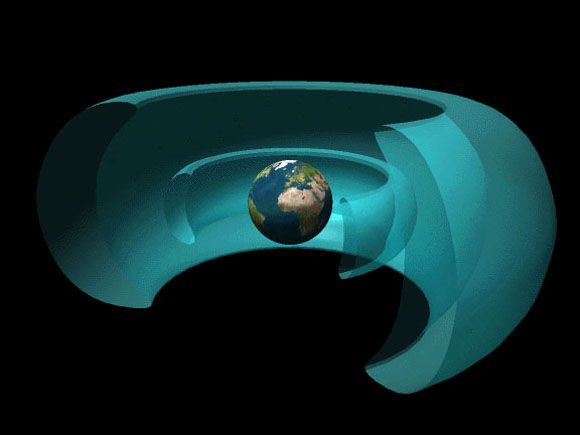NASA's Van Allen Probes Discover Zebra Stripes In Space, Created By Earth's Rotation [VIDEO]

Scientists working with NASA’s Van Allen Probes spacecraft have spotted a new constant structure, resembling slanted zebra stripes, in one of the two radiation belts surrounding Earth -- a discovery that highlights a new revelation about the planet.
According to the scientists, the structure in the inner radiation belt of the Earth is produced by the slow rotation of the planet, which was previously considered incapable of affecting the motion of particles in the radiation belt. The findings were published in Nature on Thursday.
“It is because of the unprecedented resolution of our energetic particle experiment, RBSPICE, that we now understand that the inner belt electrons are, in fact, always organized in zebra patterns,” Aleksandr Ukhorskiy of The Johns Hopkins Applied Physics Laboratory, or APL, in Laurel, Md. and the study’s lead author, said in a statement. “Furthermore, our modeling clearly identifies Earth's rotation as the mechanism creating these patterns.”
Due to the Earth’s tilted magnetic field axis, the planet’s rotation generates an oscillating, weak electric field that permeates through the entire inner radiation belt, scientists said.
To understand how that field affects the electrons, Ukhorskiy suggested imagining that the electrons are like a thick liquid solution. The global oscillations slowly stretch and fold the solution, much like taffy is stretched and folded in a candy-store machine.
This stretching and folding process results in the striped pattern observed across the entire inner belt, which extends from above Earth's atmosphere, about 500 miles above the planet's surface, up to about 8,000 miles into space. According to scientists, the radiation belts are dynamic doughnut-shaped regions around the Earth, extending high above the atmosphere and made up of high-energy particles, including both electrons and charged particles called ions.
“During active times, radiation levels can dramatically increase, which can create hazardous space weather conditions that harm orbiting spacecraft and endanger humans in space,” NASA said in the statement. “It is the goal of the Van Allen Probes mission to understand how and why radiation levels in the belts change with time.”
Check out the video here:
© Copyright IBTimes 2024. All rights reserved.






















